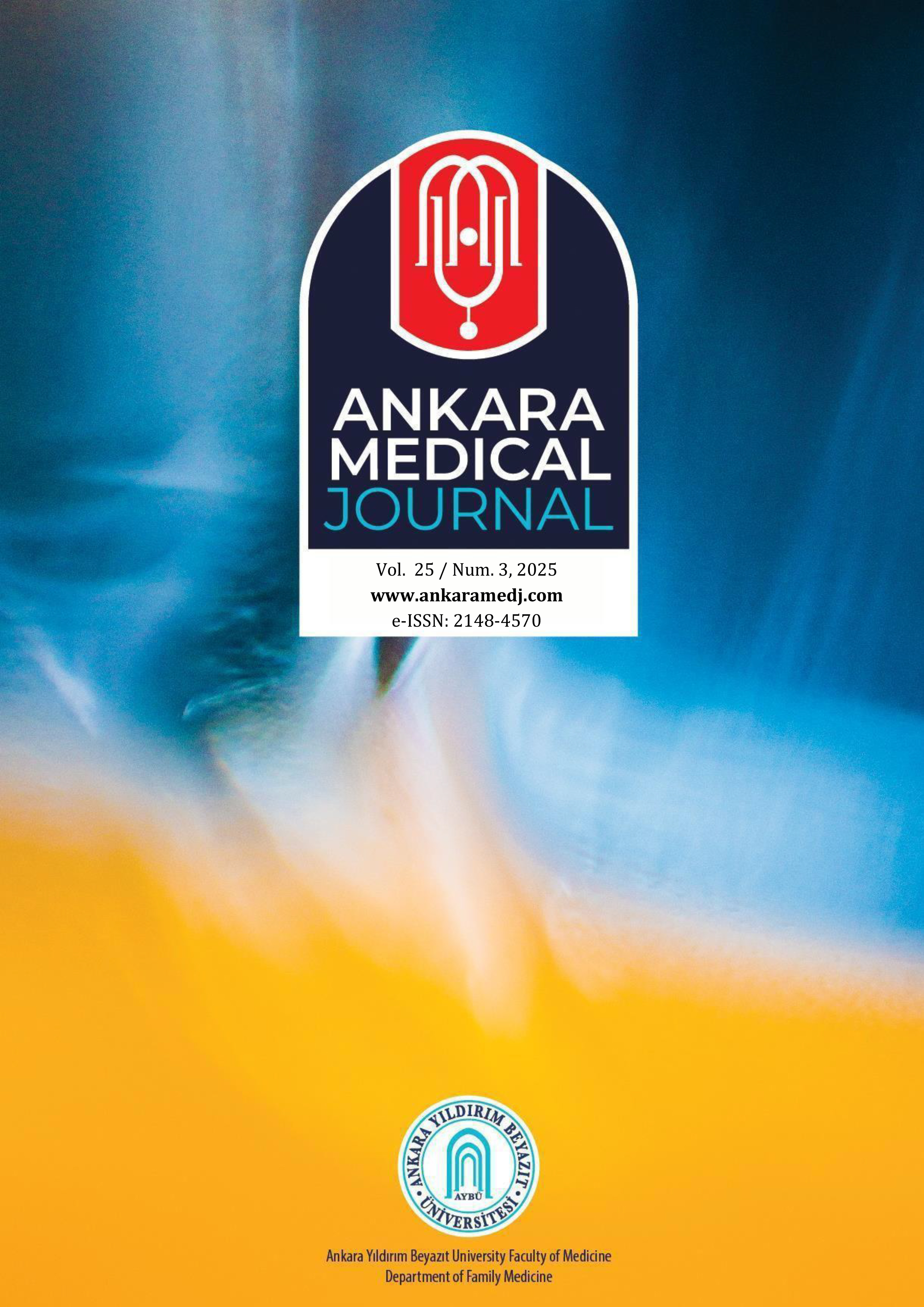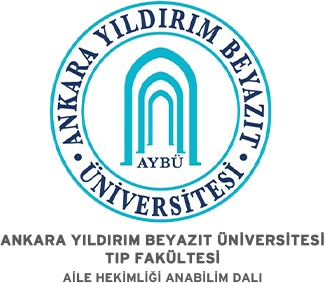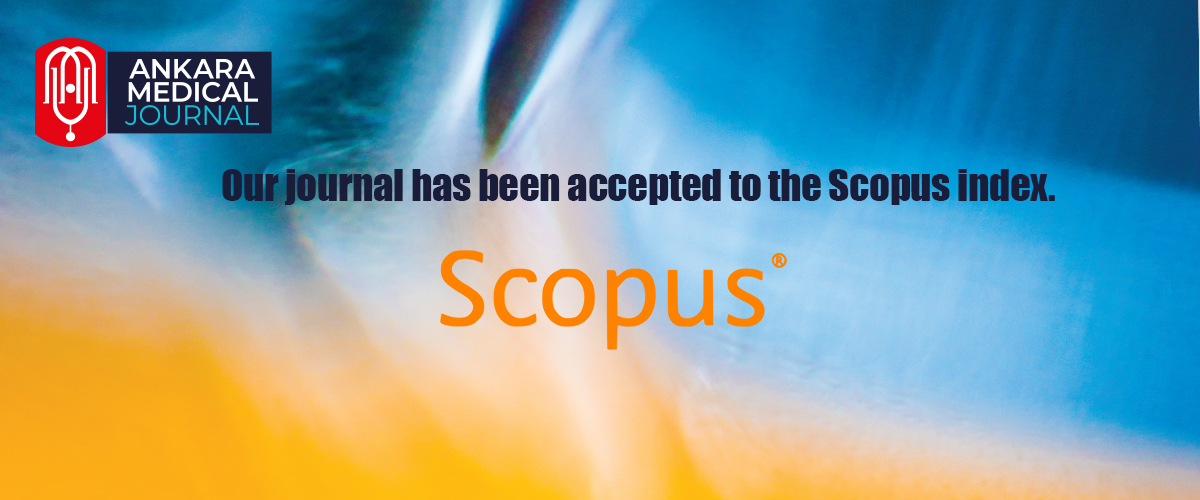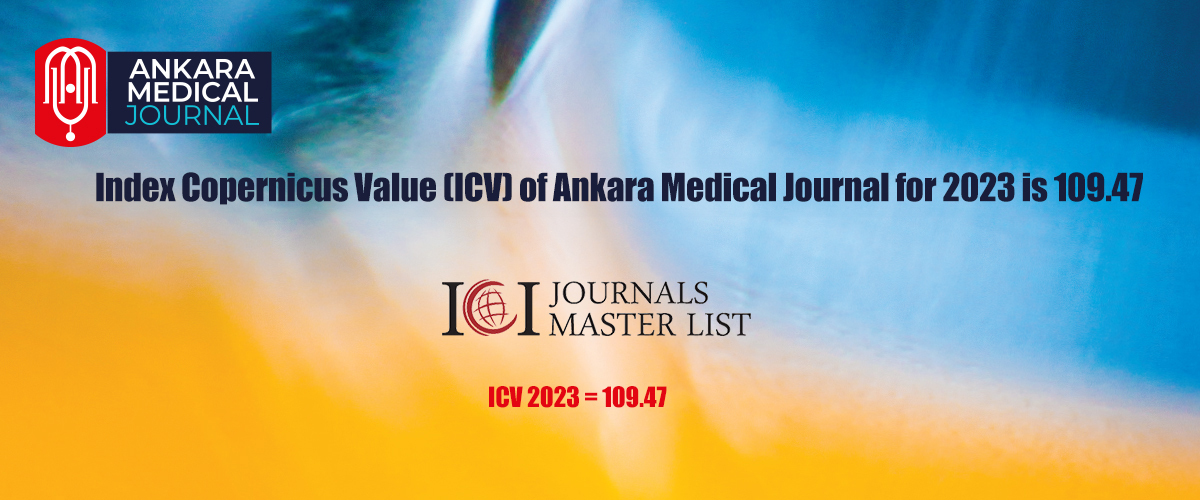Instructions for Authors
Editorial Process and Peer Review
All manuscripts submitted for publication are strictly reviewed by at least two reviewers. Due to the Ankara Medical Journal's double-blinded review principles, the names of the authors and reviewers are not revealed to the other. All submitted manuscripts are screened with plagiarism software at least two times during the evaluation process to detect overlapping and similar text instances. Once an article is accepted for publication, it may be subject to editorial revisions to aid clarity and understanding without changing the data presented.
The editor-in-chief has full authority over the editorial and scientific content of the Ankara Medical Journal and the publication time of the content.
Ankara Medical Journal does not charge any article submission or processing fees.
The article evaluation process in our journal takes around 2-6 months on average.
The data of each published research is mandatory to be kept by the researcher for 5 years. The data of some articles and analysis programs may be requested from time to time, as required by our publication policy and the rules of the international publishing organizations that we are involved in.
Copyright Agreement and Acknowledgement of Authorship Form
This is a statement of scientific contributions and responsibilities of all authors. The form is available for download at the journals webpage.
The authors whose signatures appear on this form warrant that;
Originality of the Submission
The submitted manuscript (including the text, tables, figures, graphs, images, and any other related content) is original and has not been submitted to another journal for publication, has not been published before in whole or in part,
Using Third Party Materials
The authors guarantee that the article does not infringe any personal or property right of others and accept the responsibility of the content of this manuscript and all other legal responsibilities related to the manuscript,
Copyright, License, and Rights
By signing this form, authors agree that the article, if accepted for publication by the Ankara Medical Journal, will be licensed under a Creative Commons Attribution-NonCommercial-4.0 International License (CC BY-NC), which allows third parties to share and adapt the material for only non-commercial purposes by giving the appropriate credit to the original work. For further details on the license CC BY-NC 4.0, please see https://creativecommons.org/licenses/by-nc/4.0/. The authors retain all patent and other proprietary rights to the article, including copyright.
Validity of the Agreement
If the article is not accepted for publication in the Ankara Medical Journal, the agreement will expire, and the journal will not have any rights over the content. In addition, the confidentiality of all article processes, including the refereeing process, will be protected by Ankara Medical Journal.
The authors declare that took an active part in writing of the article, planning and execution of the study and analysis of the data.
The authors undertake that the article submitted follows all the ethical norms and regulations, is original, the authors take all responsibility for the content of the article, and that there is no conflict of interest.
The authors have checked the latest version of the article and given full consent for publication.
The authors also permit the editors of the Ankara Medical Journal to revise and edit the article.
All liable ethical board permissions have been taken and if needed, the authors guarantee to hand over all data of the study to the editors.
Conflict of Interest
Authors should declare that there is no conflict of interest, and also, the status for their financial support should be stated clearly in the copyright transfer form and at the end of the article, if there is any.
Ethical Considerations
Approval by the institutional ethical review board is obligatory for all research articles containing data of any living organism (except case reports, review articles and letters to editor), in accordance with the HelsinkiDeclaration ethical standards. For case reports, informed consent should be obtained from participants. Information about the obtained ethical approval (board name, date and number) should be stated in the “materials and methods” section and under the “ethical considerations” sub-heading at the end of the main text.
All papers reporting animal experiments should include a statement in the “Materials and Methods” section giving assurance that all animals have received humane care in compliance with the “Guide for the Care and Use of Laboratory Animals” and indicating the approval by the institutional ethical review board. If necessary, the editor could request a copy of the form.
The articles must be convenient in terms of research and publication ethics, and the authors are responsible for their articles.
Artificial Intelligence (AI)
Ankara Medical Journal the WAME recommendations on ChatGPT and Chatbots related to scientific publications:
- Chatbots cannot be authors
- Authors should be transparent when chatbots are used and provide information about how they were used
- Authors are responsible for the work performed by a chatbot in their paper (including the accuracy of what is presented, and the absence of plagiarism) and for appropriate attribution of all sources (including for material produced by the chatbot)
General Format
As of 2022, Ankara Medical Journal accepts only articles written in English.
The manuscripts should be typed in a Microsoft Word file (version 7.0 and more), double-spaced with 2.5 cm margins on each side and 12-point type Cambria font. "System International" (SI) units should be used. Tables and graphics should be mentioned in the text. The abbreviations (should be written briefly in the first place they appear and then be explained in parenthesis) could be used in the abstracts and in the text.
If the work has been presented in a scientific meeting before, the meeting's name, date, and place should be supplied.
Please submit, with the manuscript, the names, addresses, and e-mail addresses of two potential referees. Note that the editor retains the sole right to decide whether or not the suggested reviewers are used.
Following the abstract sections of the scientific articles, at least three keywords should be given, following the format of Index Medicus "Medical Subject Headings".
Abstracts
All articles except letters to editor should contain abstracts in English, containing titles and 3-6 keywords. The Word count should not exceed 250.
Research articles
Abstracts should not exceed 250 words and should contain these sections:
- Objectives,
- Materials and Methods,
- Results,
- Conclusion
The main text should not exceed 3000 words, excluding the abstract, references, tables, and figure legends. There should be a maximum of 30 references.
The main manuscripts of the research articles should contain these sections:
- Title and abstract,
- Keywords,
- Introduction,
- Materials and Methods,
- Results,
- Discussion,
- References,
- Tables and figures.
We strongly recommend using the STROBE checklist for observational studies (cohort, case-control studies, cross-sectional studies). For the randomized trials, the CONSORT checklist may be used. For systematic reviews and meta-analyses, please refer to the PRISMA checklist.
Reviews
In review articles written upon invitation, recent developments on the subject should be discussed in the light of the author's experiences. A non-structured, brief, explanatory English abstract should take place, not exceeding 250 words. Review articles must not exceed 5000 words for the main text (excluding abstract, references, tables, and figure legends). The number of authors should not exceed 5, and the number of references should not exceed 60.
Case Reports
The abstract should be brief, descriptive, non-structured, and should not exceed 250 words.
Case reports should contain these sections;
- Title
- Abstract (why the case has been proposed for publication should be declared clearly),
- Keywords,
- Introduction
- Case report,
- Discussion,
- References,
- Tables and figures.
Case reports must not exceed 1200 words (excluding references, tables, and figure legends). Case reports can be submitted by a maximum of 5 authors and must have no more than 10 references and 5 figures or tables.
We strongly recommend using the CARE checklist for case reports.
Letters to the Editor
Letters to the Editor must not exceed 500 words (excluding references). An abstract is not required with this type of manuscript. A letter to editor can be submitted by a maximum of 4 authors and must have no more than 5 references and 1 figure or table.
References and Citations
You can download the Endnote Style file of Ankara Medical Journal here, for your manuscripts.
References should be numbered in the order they appear in the text and should be given as superscripts in the text, after the punctuation at the end of the sentences ( i.e., reference 4 should be given as,4). Cited reference numbers should be given after the punctuation at the end of the sentence unless otherwise required.
If the reference numbers are consecutive in the sentences which are referring to more than one reference, the first reference-last reference should be written (e.g., Hypertension is an important health problem.6-9), whereas non-consecutive references should be given with commas (e.g., The prevalence of Hypertension is on rise.3-7,13,20).
All authors should be listed if the number is six or fewer, otherwise, list the first three authors and then add et al. If online references are to be used, do not forget to give the date of access in parentheses.
Journal abbreviations should conform to the style used in the Cumulated Index Medicus. The full name of the journals, which have no abbreviations, should be written.
For journal articles, the citation should be as follows; surnames, initials of the author names, the title of the article, name of the journal, year, volume, number, and inclusive pages. Please use the abbreviation for the journal names; you may use the full name if the abbreviation form does not exist. No spaces should be left after punctuation between numbers. Repeated numbers should be deleted when the page range is given (e.g., 1252-63 instead of 1252-1263).
As an option, if a journal carries continuous pagination throughout a volume (as many medical journals do), the month and issue number may be omitted.
Examples for both situations;
U.S. Preventive Services Task Force. Screening for depression: recommendations and rationale. Ann Intern Med. 2002;136(10):760-4.
Jewkes R, Nduna M, Levin J, et al. Impact of stepping stones on incidence of HIV and HSV-2 and sexual behaviour in rural South Africa: cluster randomised controlled trial. BMJ. 2008;337:a506.
Citation from a book
Citation from a book that has a single author and editor should be as follows;
Neinstein LS. The office visit, interview techniques, and recommendations to parents. In: Neinstein LS, ed. Adolescent Health Care. A practical guide. 3rd ed. Baltimore: Williams&Wilkins; 1996:46-60.
Citation from a book which has authors and editors more than one should contain notably the author names of the chapter;
Schulz JE, Parran T Jr. Principles of identification and intervention. In: Graham AW, Shultz TK, eds. Principles of Addicton Medicine. 3rd ed. Baltimore: Williams&Wilkins; 1998:1-10.
For references from Ph.D. thesis;
Kılıç C. General Health Survey: A Study of Reliability and Validity. Ph.D. Thesis, Hacettepe University Faculty of Medicine, Department of Psychiatry, Ankara; 1992:23-8.
For references from an internet page; the name of the site, URL address, names of authors if present, and date of access should be given in detail.
OECD Data [Internet]. https://data.oecd.org/. (Accessed: 15.05.2020).
Görlach A. Opinion: Coronavirus conspiracy theories on the rise [Internet]. 2020;
https://www.dw.com/en/opinion-coronavirus-conspiracy-theories-on-the-rise/a-53418223. (Accessed: 13.05.2020).
Giving DOI;
Joos S, Musselmann B, Szecsenyi J. Integration of complementary and alternative medicine into family practices in Germany: results of a national survey. Evid Based Complement Alternat Med. 2011;2011:495813 (doi:10.1093/ecam/nep019).
For other reference styles, please refer to "ICMJE Uniform Requirements for Manuscripts Submitted to Biomedical Journals: Sample References"
Publication Ethics and Malpractice Statement
Ankara Med J is an electronic peer-reviewed international journal committed to upholding the possible highest standards of publication ethics. In order to provide our readers with a journal of the highest quality, we state the following principles of Publication Ethics and Malpractice Statement. All articles not in accordance with these standards will be removed from the publication if malpractice is discovered at any time, even after the publication. Ankara Med J is checking all papers in a double-blind peer-review process. We also check for plagiarism and investigate fabrication (making up research data), falsification (manipulating existing research data, tables, or images) and improper use of humans or animals in manuscripts. Following the ethical policy, we will report any suspected plagiarism or duplicate publishing cases. Ankara Med J reserves the right to use plagiarism detecting software (e.g., iThenticate) to scan submitted papers at any time. It is also mandatory to upload a similarity rate file for all articles by the submitting author. The COPE (Committee on Publication Ethics) guidelines and flow charts can be reviewed for more detailed information on the publication ethics principles adopted by our journal.
Authors must ensure that they have written original works. In addition, they must ensure that the manuscript has not been issued elsewhere. Any work or words of other authors, contributors, or references should be appropriately credited and referenced. The authors are also responsible for language editing before submitting the article. Authors submitting their works to the journal for publication as original articles confirm that the submitted works represent their authors' contributions and have not been copied or plagiarized in whole or in part from other works without clearly citing. Any work or words of other authors, contributors, or references (including online sites) should be appropriately credited and referenced. All authors should disclose financial or other conflicts of interest that might influence the results or interpretation of their manuscript (financial support for the project should be disclosed). When an author discovers a significant error or inaccuracy in his/her published work, the author must promptly notify the journal editor and cooperate to retract or correct the paper. An author agrees to the license agreement before submitting the article. All articles must be submitted using the online submission procedure. Submitting a paper simultaneously to more than one publication at a time is a breach of publication ethics.
Editors must ensure a fair double-blind peer-review of the submitted articles for publication. They will strive to prevent any potential conflict of interests between the author and editorial and review personnel. Editors will also ensure that all the information related to submitted manuscripts is kept confidential before publishing. Editor-in-Chief will coordinate the work of the editors.
Reviewers evaluate manuscripts based on content without regard to ethnic origin, gender, sexual orientation, citizenship, religious belief, or political philosophy of the authors. They must ensure that all the information related to submitted manuscripts is confidential and must report to the Editor-in-Chief if they are aware of copyright infringement and plagiarism on the author's side. They must evaluate the submitted works objectively and present their opinions on the works clearly in the review form. A reviewer who feels unqualified to review the research reported in a manuscript or knows that its prompt review will be impossible should notify the Editor-in-Chief and excuse himself from the review process.
Writing of Statistical Data
The statistical method used should be reported so that a reader, whoever could reach the original data, could understand the results. The terms used, abbreviations, symbols, if used, the software, and the statistical method should all be defined. An explanation of the computer program used and the statistical method should be given. References on study design and statistical method should be cited where possible.
In the presentation of results, especially when presenting means and percentages, one or two digits after the dot may be used in the presentation of decimal digits, consistent with the whole article. In presenting statistical values (such as p, t, z, F, Chi-Square), three digits should be written after the dot. In the presentation of p values, the full p value should be given with the test statistic (e.g. p=0.032) instead of p<0.05 or p>0.05. If this value is less than one in a thousand, it should be represented as p<0.001.

























